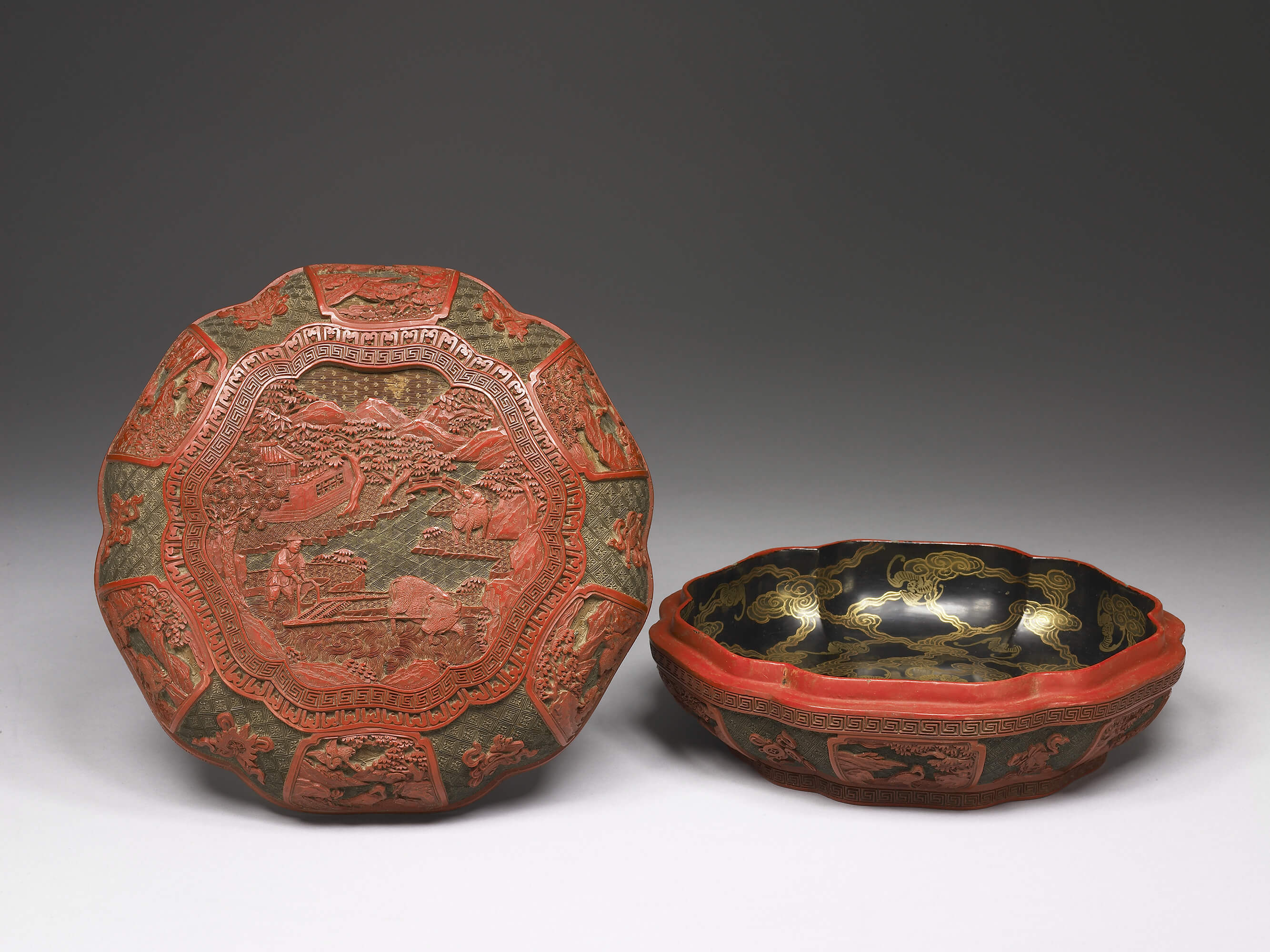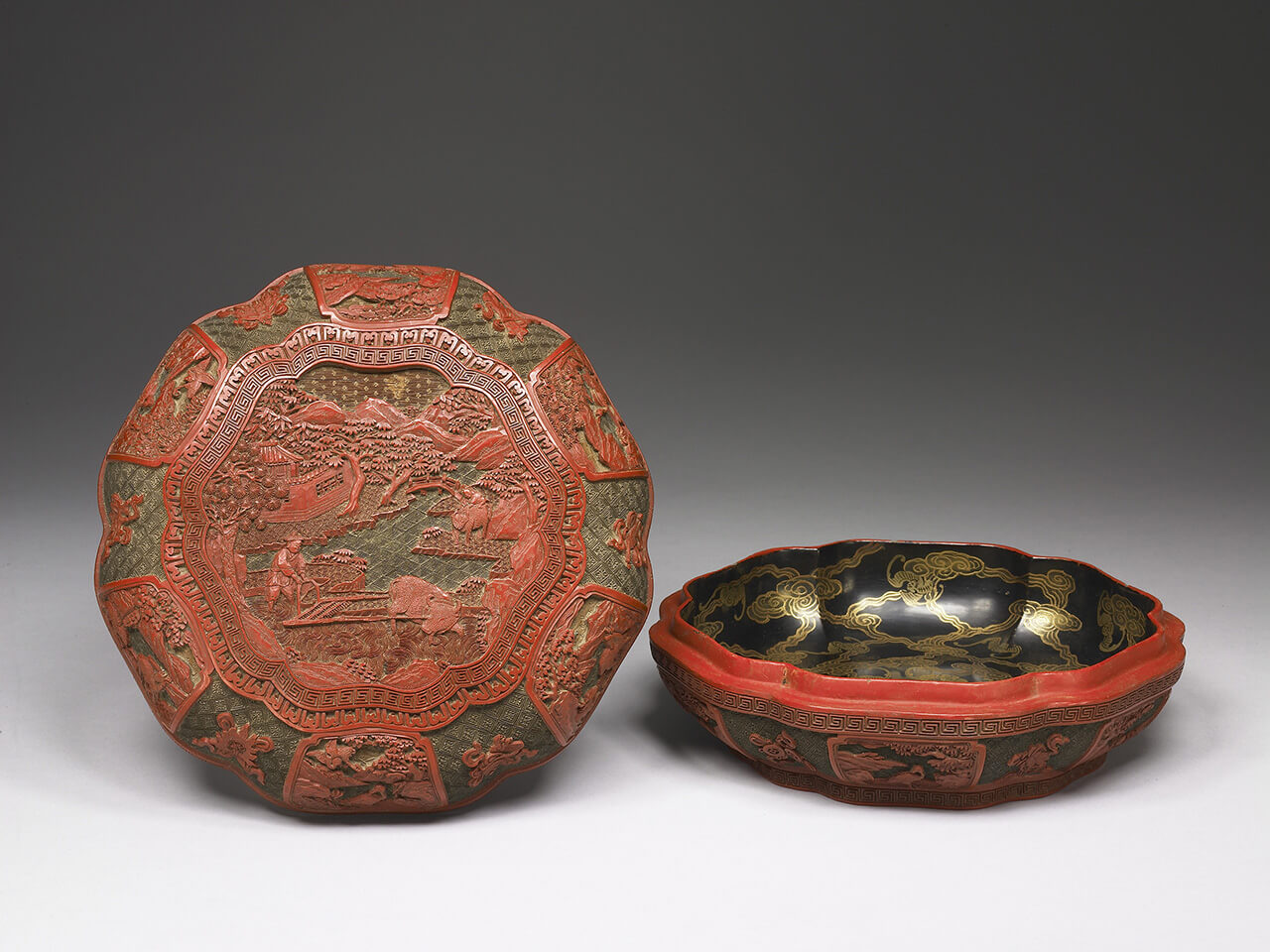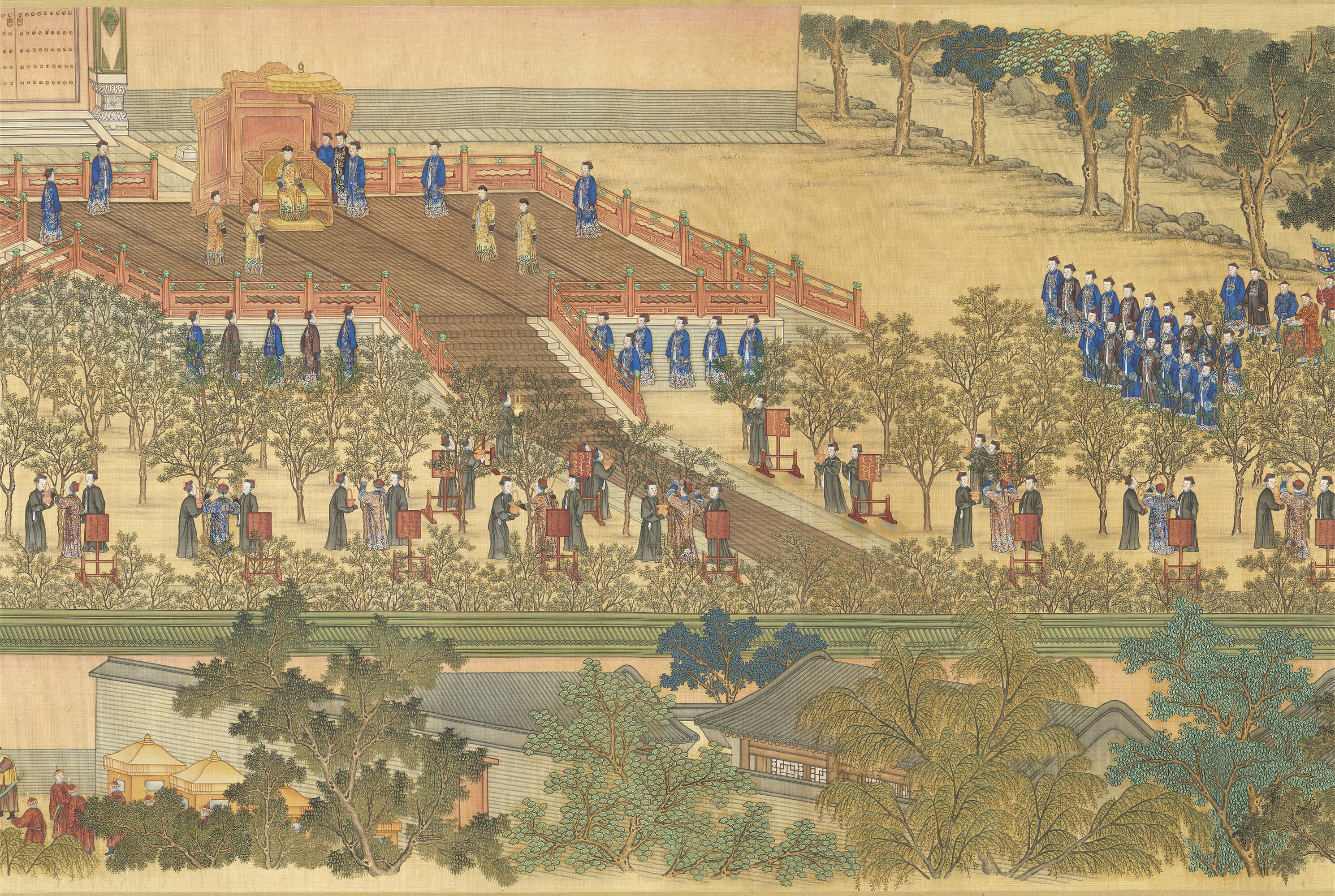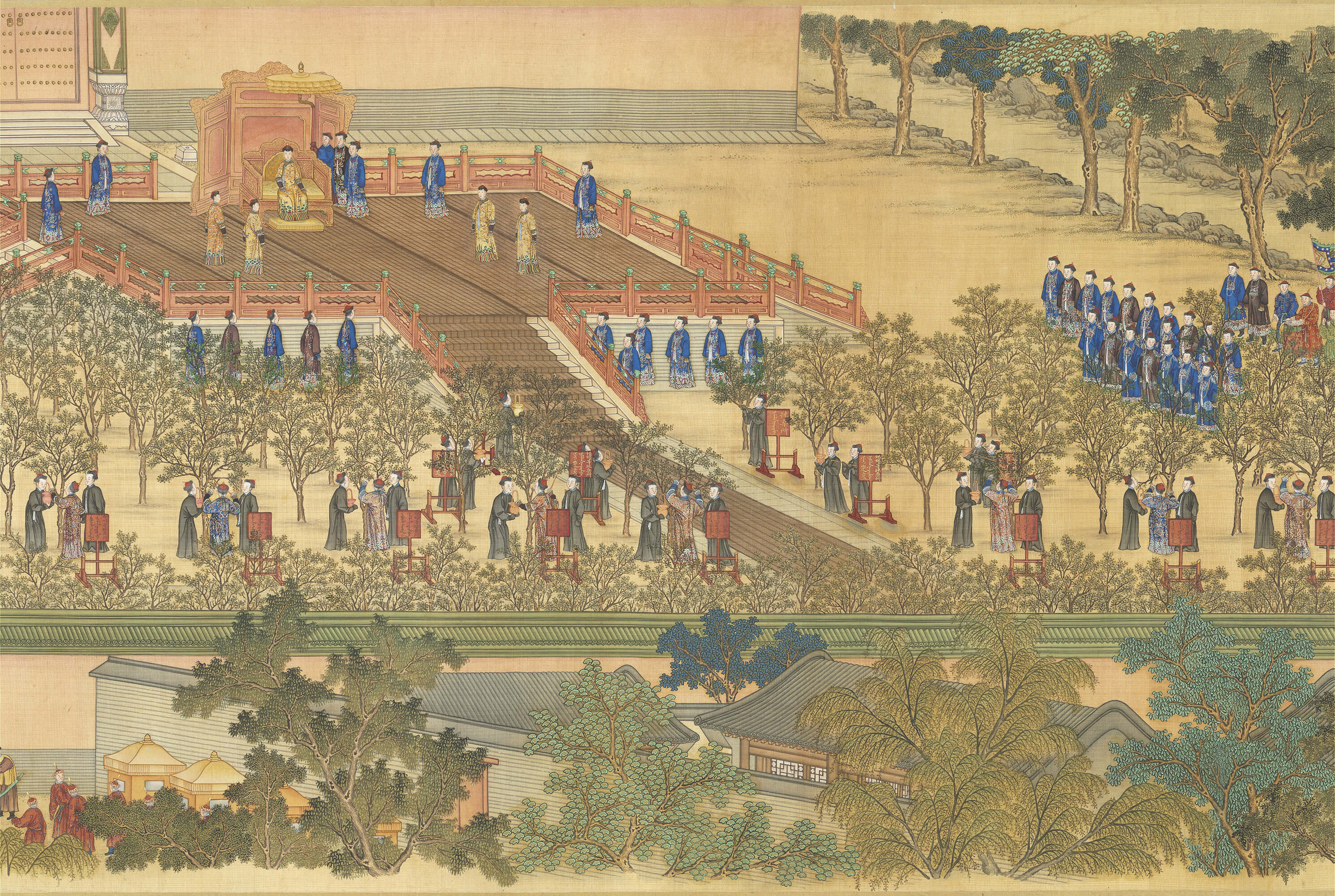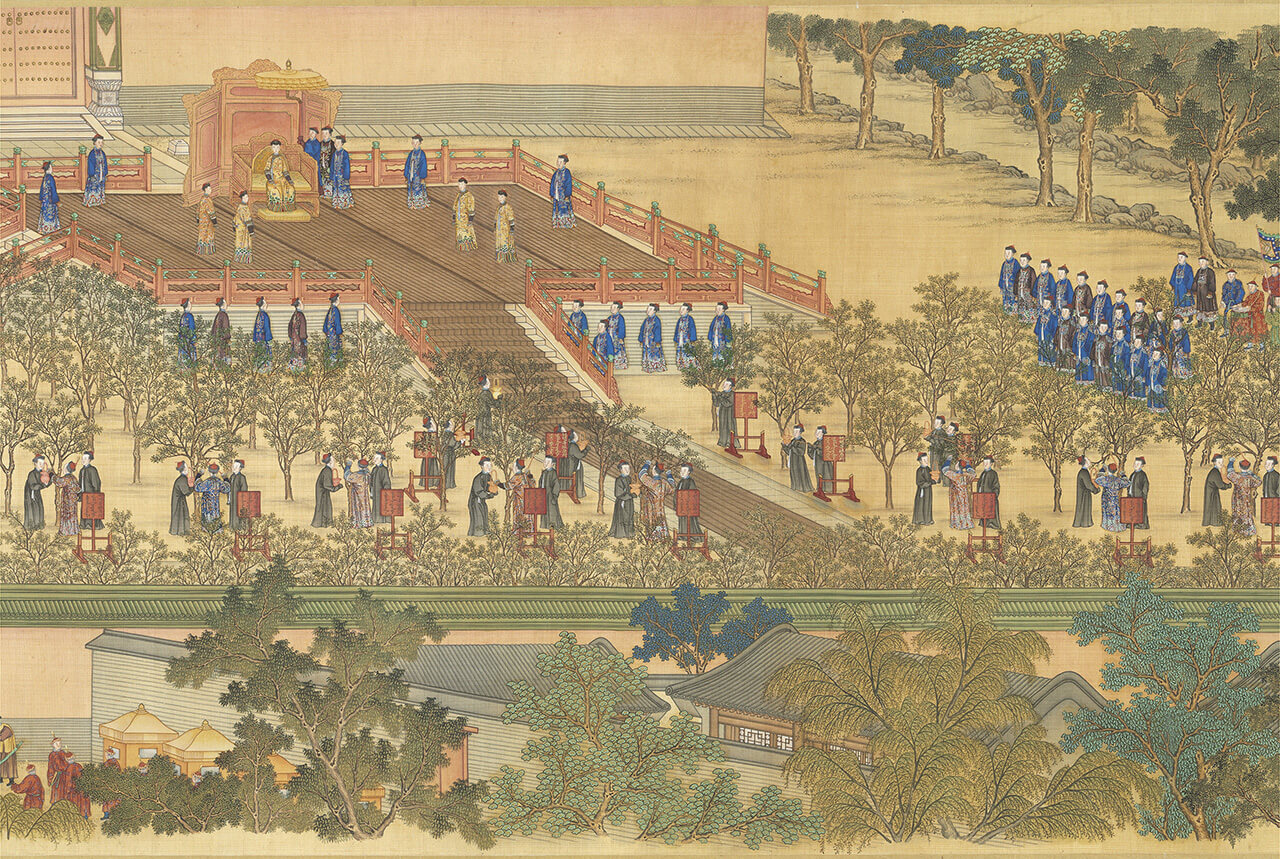Seasonal Rhythms
Traditional time was structured by celestial movements, ritual ceremonies, and the agricultural calendar. The Qing dynasty's sense of time merged Han Chinese customs with Manchu-Mongolian tradition, evolving into diverse forms that followed seasonal and natural changes. Through spring awakening, summer growth, autumnal harvest, and winter retreat, this cycle reveals the story of a year in the Qing dynasty.
Spring Awakening
- Carved lacquer lobed box with farming scene
- Qing dynasty (1644–1911)
The lid features a farmer with a plow and a backward-looking water buffalo leveling a flooded paddy. This scene derives from the Gengzhi Tuce (Pictures of Tilling and Weaving) album by Kangxi court painters Jiao Bingzhen (active late 17th–early 18th century) and Leng Mei (c. 1669–1742).
The layered carving presents three chromatic planes: vermillion delineates the primary elements of figures, fields, and mountains; green defines the flowing river; while the yellow ground establishes the distant sky.
- Imperial Rites of Sericulture: Mulberry Picking
- Court artists
- Qing dynasty (1644–1911)
The Qing court established two ceremonies: the Emperor's Ritual Plowing and the Empress's Sericulture Rite. In the latter, the Empress led court ladies in worshipping the Sericulture Deity before tending silkworms—rituals designed to promote farming and weaving among the people. This painting was commissioned by the Qianlong Emperor after Empress Xiaoxian's death. His instruction to court painters to consult her brother Fuheng suggests this was created as a memorial to her.
